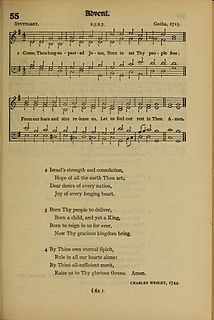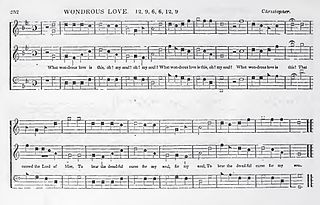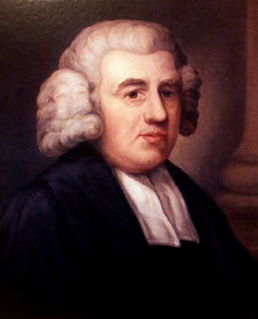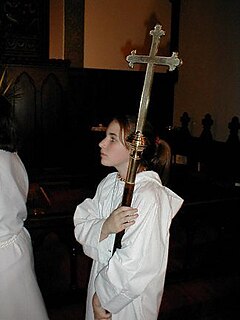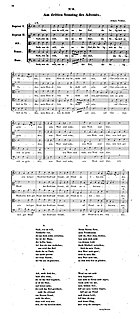Elvet Banks is a modern hymn tune, in the somewhat unusual meter of 87.87.87.87.7, set in the Lutheran Service Book (LSB) of 2006 for the hymns:

A hymn tune is the melody of a musical composition to which a hymn text is sung. Musically speaking, a hymn is generally understood to have four-part harmony, a fast harmonic rhythm, and no refrain or chorus.

Lutheran Service Book (LSB) is the newest official hymnal of the Lutheran Church–Missouri Synod (LCMS) and the Lutheran Church–Canada (LCC). It was prepared by the LCMS Commission on Worship and published by Concordia Publishing House, the official publisher of the LCMS. It is the fourth official English-language hymnal of the LCMS published since the synod began transitioning from German to English in the early 1900s. LSB is intended to succeed both The Lutheran Hymnal (TLH) and Lutheran Worship (LW) as the common hymnal of the LCMS. Supplemental and companion editions to the hymnal were released throughout the end of 2006 and into 2007. The hymnal was officially approved by the LCMS at the 2004 LCMS National Convention in St. Louis. It was officially released on September 1, 2006, but many customers who pre-ordered the hymnal received their copies several weeks earlier.
- To Jordan came the Christ, our Lord, recommended for use in Epiphany [1] and set as an alternative to the sixteenth century chorale tune Christ unser Herr
- May God bestow on us His grace, recommended for use in Lent [2] and set as an alternative to the older tune Es Wolle Gott uns gnärdig sein.

Epiphany is a Christian feast day that celebrates the revelation (theophany) of God incarnate as Jesus Christ.
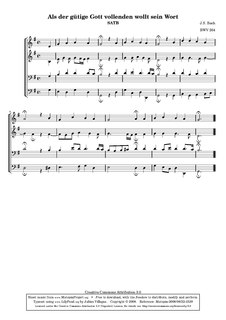
Chorale is the name of several related musical forms originating in the music genre of the Lutheran chorale:

Lent is a solemn religious observance in the Christian liturgical calendar that begins on Ash Wednesday and ends approximately six weeks later on Holy Saturday, the day before Easter Sunday. The purpose of Lent is the preparation of the believer for Easter through prayer, doing penance, mortifying the flesh, repentance of sins, almsgiving, and denial of ego. This event is observed in the Anglican, Eastern Orthodox, Lutheran, Methodist, Moravian, Oriental Orthodox, Reformed, and Roman Catholic Churches. Some Anabaptist and evangelical churches also observe the Lenten season.
The tune was selected for the LSB specifically to make some of these unsung hymns more accessible. [3]
The meter in this tune and its texts is also unusual in that most "8.7.8.7"-derived material (such as in Blaenwern and Hyfrydol) tends to have a strong, trochaic foot, whereas this has a gentler, iambic foot.
Blaenwern is a Welsh Christian hymn tune composed by William Penfro Rowlands (1860–1937), during the Welsh revival of 1904–1905. 'Blaenwern' was first published in Henry H. Jones' Cân a Moliant (1915).

Hyfrydol is a Welsh hymn tune that appears in a number of Christian hymnals in various arrangements. Composed by Rowland Prichard, it was originally published in the composer's handbook to the children's songbook Cyfaill y Cantorion. Prichard composed the tune before he was twenty years old.





